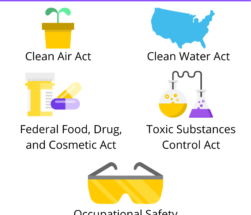In today’s rapidly evolving tech landscape, businesses face numerous challenges when it comes to sourcing reliable suppliers and building strong partnerships. In order to succeed, companies need to adopt effective Supplier Relationship Management (SRM) strategies. This article dives deep into the world of SRM, exploring its importance, benefits, key components, and best practices.
Understanding Supplier Relationship Management (SRM)
Supplier Relationship Management (SRM) refers to the systematic approach companies use to manage their interactions and relationships with their suppliers. It involves overseeing all aspects of the supplier lifecycle, from initial selection and qualification to ongoing collaboration and performance evaluation.
The Importance of SRM in the Tech Industry
In the fast-paced world of technology, where innovation drives success, having a sustainable and efficient supply chain is crucial. Effective SRM allows tech companies to reduce costs, enhance product quality, minimize risks, and gain a competitive edge in the market. By nurturing strong relationships with suppliers, businesses can foster mutual trust, open communication, and collaboration, leading to long-term success.
Benefits of Implementing SRM
Implementing a robust SRM strategy can yield numerous benefits for tech companies:
1. Enhanced Supplier Performance:
By actively managing relationships with suppliers, businesses can ensure they consistently deliver on time, meet quality requirements, and fulfill product specifications. This leads to improved overall supplier performance, reducing production delays and quality issues.
2. Reduced Costs:
Strong relationships with suppliers can lead to better negotiation power, improved pricing, and favorable contract terms. With effective SRM, businesses can identify cost-saving opportunities, optimize inventory management, and maximize efficiencies across the supply chain.
3. Increased Innovation:
Collaborating closely with suppliers enables companies to tap into their expertise and knowledge. This fosters a culture of innovation, where suppliers become strategic partners, contributing ideas, insights, and technological advancements, ultimately driving business growth.
4. Mitigated Risks:
Having a comprehensive SRM strategy helps businesses identify and mitigate potential risks associated with their supply chain. By proactively monitoring supplier performance, conducting due diligence, and maintaining alternative supplier options, companies can minimize the impact of disruptions and ensure business continuity.
Key Components of an Effective SRM Strategy
Building a successful Supplier Relationship Management strategy requires careful planning and execution. The key components include:
1. Supplier Identification and Selection:
Thoroughly research potential suppliers, evaluating their capabilities, track record, financial stability, and alignment with your business goals. Establish clear criteria for supplier evaluation and selection based on factors such as technological proficiency, quality control, and ethical considerations.
2. Performance Measurement and Evaluation:
Regularly monitor and assess supplier performance against predefined Key Performance Indicators (KPIs), such as on-time delivery, product quality, and responsiveness. Utilize scorecards, performance reviews, and feedback mechanisms to maintain transparency and accountability.
3. Collaboration and Communication:
Establish open lines of communication with suppliers, encouraging regular interaction and exchange of information. Foster a collaborative environment where ideas and feedback are welcomed. Regularly share your business goals, forecasts, and market trends to align your strategies with those of your suppliers.
4. Continuous Improvement Initiatives:
Encourage suppliers to identify areas for improvement and innovation within the supply chain. Implement continuous improvement initiatives, such as joint value engineering and technology-sharing programs, to drive efficiency and stay ahead of the competition.
5. Relationship Development:
Invest time and effort in building strong relationships with suppliers. Attend industry events, organize supplier conferences, and participate in supplier recognition programs. Recognize the contributions of your suppliers and create a friendly and collaborative environment to foster long-term partnerships.
Best Practices for SRM
Adopting best practices can further enhance the effectiveness of your SRM strategy:
1. Invest in Technology:
Utilize appropriate software solutions that allow for seamless supplier collaboration, performance tracking, and data analysis. Automation can streamline processes and provide real-time visibility into supplier activities, enabling proactive decision-making.
2. Proactive Risk Management:
Identify potential supply chain risks and develop contingency plans to mitigate their impact. Regularly assess supplier vulnerabilities and diversify your supplier base to minimize dependency on a single source.
3. Regular Performance reviews:
Conduct periodic reviews and evaluations to identify areas of improvement for both your organization and suppliers. Provide constructive feedback and work together to address any issues or challenges that arise.
4. Maintain Long-Term Perspective:
While cost-saving is important, focusing solely on short-term gains may hinder your ability to build sustainable relationships. Look beyond immediate savings and consider long-term value, innovation potential, and collaboration opportunities with suppliers.
Conclusion
In the competitive landscape of the tech industry, effective Supplier Relationship Management is crucial for success. By implementing a comprehensive SRM strategy, tech companies can enhance supplier performance, reduce costs, drive innovation, and mitigate risks. By prioritizing strong relationships and collaboration, businesses can navigate the complexities of the supply chain and position themselves as industry leaders.








